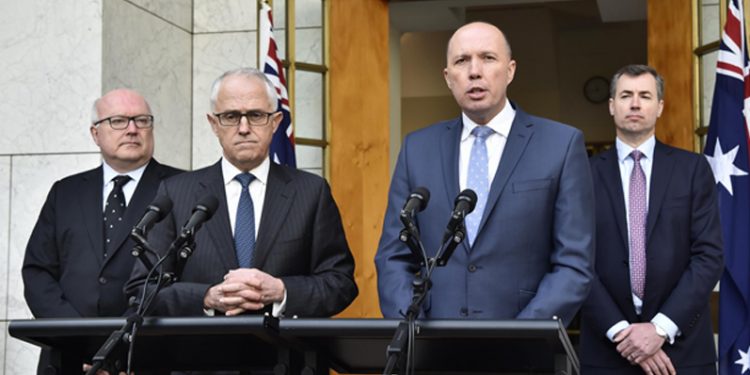 Print This Post
Print This Post- The Strategist - https://www.aspistrategist.org.au -
The making of the Australian intelligence community
Posted By Graeme Dobell on June 15, 2020 @ 06:00

Article printed from The Strategist: https://www.aspistrategist.org.au
URL to article: https://www.aspistrategist.org.au/the-making-of-the-australian-intelligence-community/
[1] establishment : https://www.aspistrategist.org.au/asio-1-the-intelligence-jewels-and-the-alliance/
[2] Australian: https://www.aspistrategist.org.au/asio-2-the-spooks-and-oz-politics/
[3] Security: https://www.aspistrategist.org.au/asio-3-giving-up-the-secrets/
[4] Intelligence: https://www.aspistrategist.org.au/asio-4-terrorism-transparency-and-traitors/
[5] Organisation: https://www.aspistrategist.org.au/the-protest-years-a-review-of-asios-official-history-vol-2/
[6] 1949: https://www.asio.gov.au/about/history/establishment-asio.html
[7] home affairs portfolio: https://www.malcolmturnbull.com.au/media/press-conference-announcing-the-establishment-of-the-home-affairs-portfolio
[8] 2017: https://www.theguardian.com/australia-news/2017/jul/18/malcolm-turnbulls-big-idea-for-a-home-affairs-ministry-is-a-big-gamble
[9] 2004 inquiry: https://fas.org/irp/world/australia/flood.pdf
[10] 2008 review: http://ict-industry-reports.com.au/wp-content/uploads/sites/4/2013/10/2008-Review-Homeland-and-Border-Security-Ric-Smith-June-2008.pdf
[11] 2011 Cornall–Black: https://www.pmc.gov.au/resource-centre/national-security/2011-independent-review-intelligence-community
[12] the weakest effort: https://archive.lowyinstitute.org/the-interpreter/intelligence-review-not-pinch-flood
[13] independent intelligence review: https://pmc.gov.au/resource-centre/national-security/report-2017-independent-intelligence-review
[14] legal framework of the intelligence community: https://www.ag.gov.au/national-security/consultations/comprehensive-review-legal-framework-governing-national-intelligence-community
[15] A bigger picture: https://www.hardiegrant.com/au/publishing/bookfinder/book/a-bigger-picture-by-malcolm-turnbull/9781743795637
[16] Law, politics and intelligence: A life of Robert Hope: https://www.newsouthbooks.com.au/books/biography-robert-marsden-hope-qc/
[17] strange mix: https://www.aspistrategist.org.au/oz-intelligence-review-home-affairs/
[18] the good and not so good of policymaking: https://www.aspistrategist.org.au/good-not-good-policymaking/
[19] time-tested rules: https://www.aspistrategist.org.au/canberras-unholy-trinity/
[20] Department of Home Affairs: https://www.homeaffairs.gov.au/
[21] here’s a stroll: https://www.aspistrategist.org.au/oz-intelligence-review-justice-hope-legacy/
[22] personality: https://www.aspistrategist.org.au/keeping-australians-and-their-civil-liberties-safe-who-was-robert-marsden-hope/
[23] origins: https://www.aspistrategist.org.au/keeping-australians-and-their-civil-liberties-safe-the-origins-of-the-hope-model/
[24] principles: https://www.aspistrategist.org.au/keeping-australians-and-their-civil-liberties-safe-the-principles-of-the-hope-model/
[25] future: https://www.aspistrategist.org.au/keeping-australians-and-their-civil-liberties-safe-the-future-of-the-hope-model/